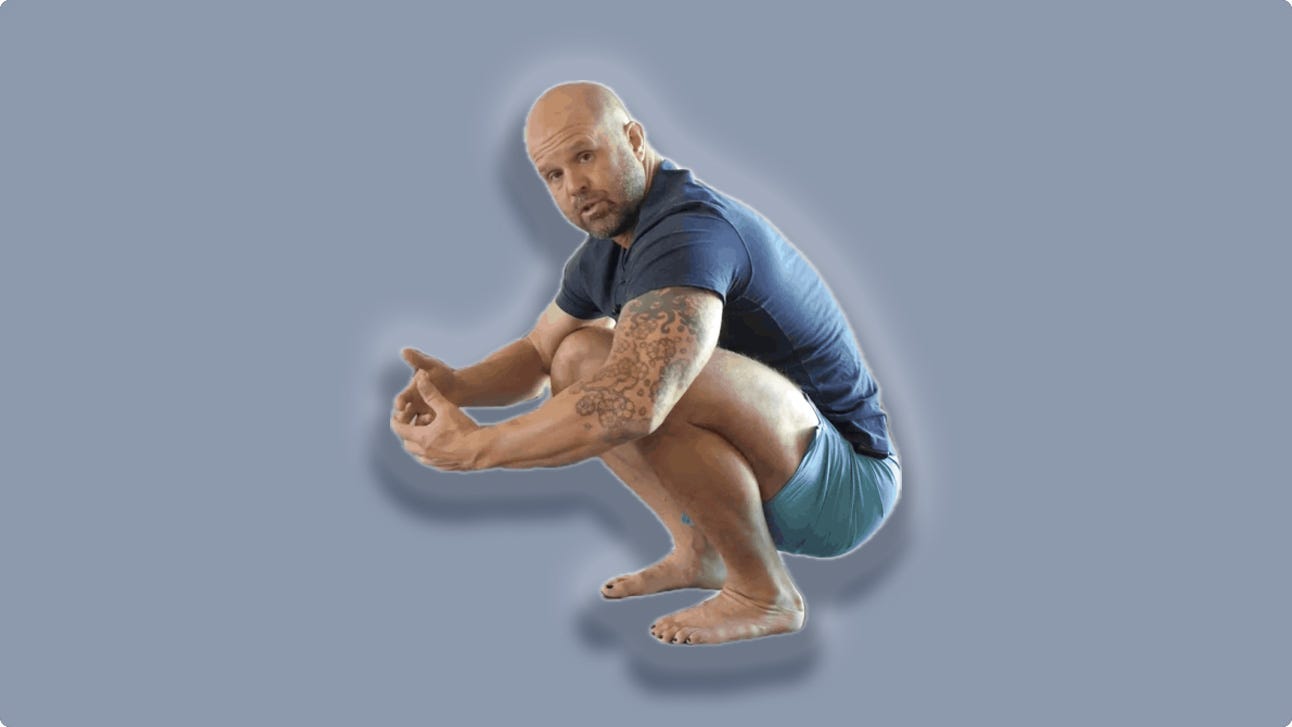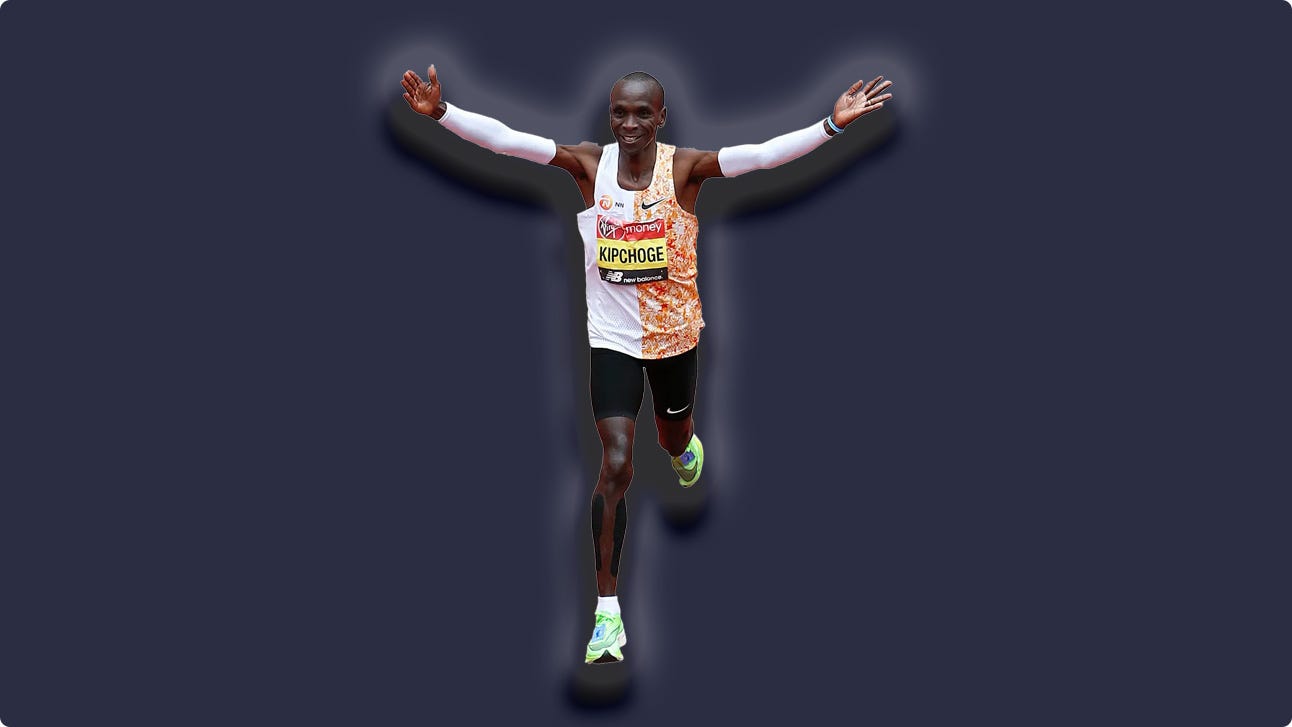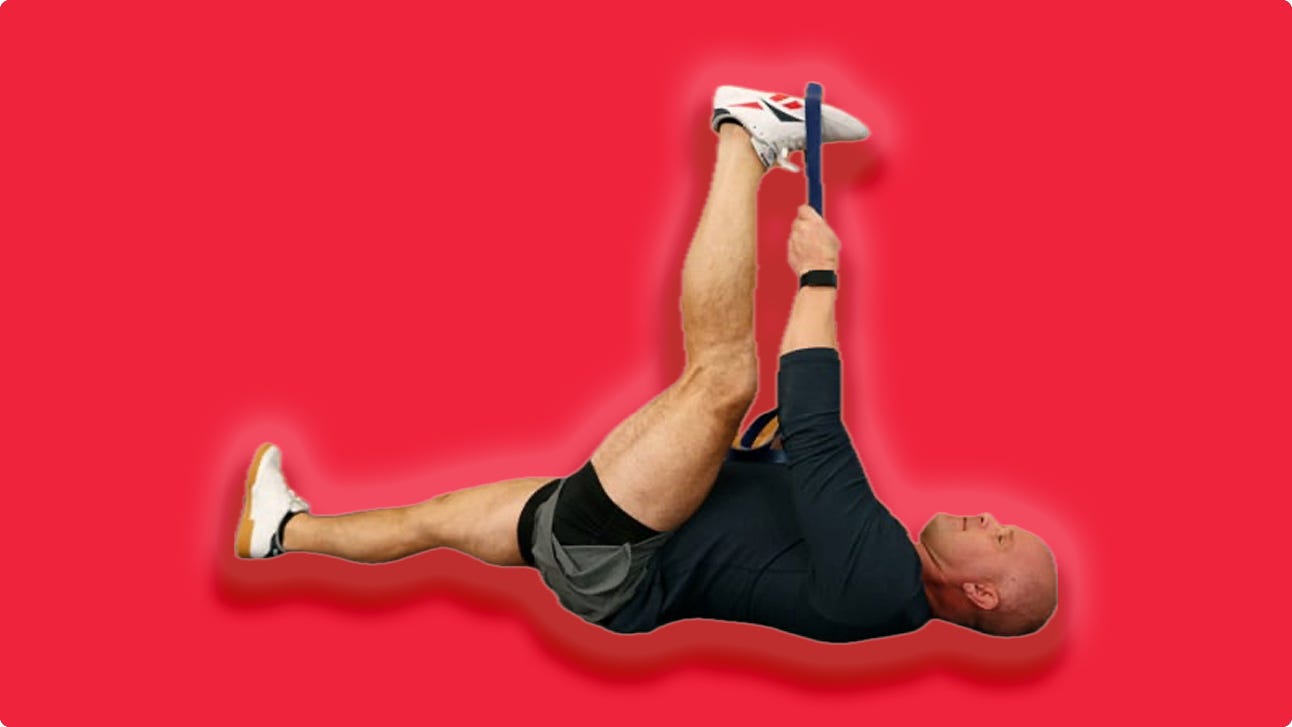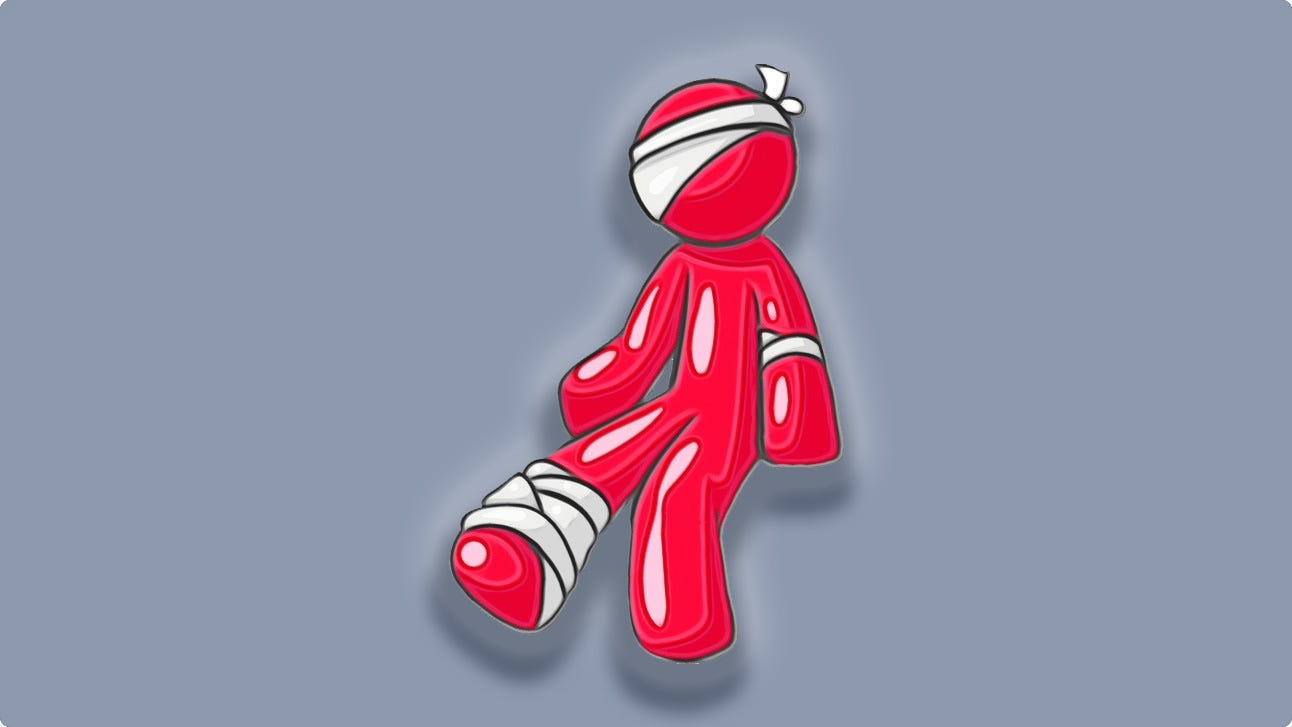Ready to Run, by Kelly Starrett: a review
This is the most ambitious blog post that I've made. Naturally, I've procrastinated.
Top of the morning, sapien. Welcome to Common Sense Medicine, where I try and keep you up to date on the latest and greatest in longevity science.
It sucks to come back to a half-baked routine, especially after a vacation which I wasn’t really focused on my main goal which is to be strength training. I think I’ve had a pretty good run of a cut—I got down to ~145 lbs., and have kept most of the strength that I gained this summer when I first started weight lifting. Currently, for the big 3 lifts (squat, deadlift, and bench), I think strengthlevel.com has me at a square novice level (which I most definitely am). See below for the exact stats.
In the gym, I think I was becoming kind of soft and just “going through the motions.” I realized it’s because my cut is taking such a long time and that I’m not really focusing on lifting more weight, for longer. I also had one personal training session, courtesy of the deal which I signed with my gym in July, where I tried to figure out some core exercises which I can add onto the hypertrophy cycle that I’m running in the next year from January to May 2025.
How I’m refocusing onto the routine is raising the amount of calories that I’m eating, focusing on weight gain the next few weeks, and really putting my nose to the grindstone before my next vacation in February where I know I’m not going to have access to a gym. I’m also going to have to plan around that, but that is for another blog post!
Currently, I’m at 145-147 lbs right now, and I’m trying to run a hypertrophy cycle until the end of May before I start getting into the running phase of my training and a half marathon at the end of the summer (probably October 2025, but going to keep it broad and say H2 2025).
I’m also writing this frantically in the few days before I need to publish. Guess I should probably schedule these a little further out in advance, but I feel like Sisyphus pushing his boulder up a hill. This is going to be a bit of a longer post, which is why I put it off—I’m reviewing one of the more interesting books which I’ve read in a while. It’s helpful for establishing a good injury prevention protocol when starting to run.
The best thing in the meanwhile, therefore, is to focus on doing the best that I can every day, hopefully getting through everything you want to, and pushing on, learning as I go. I am generally of the opinion that you should have seasons in your training, and as I’m focusing more on my physical health over the past few months, I’m focusing on consistency over any one thing.
Keeping the goal in focus is really important, and I’ve generally found that keeping 3 goals for every 3 month period is a great way of keeping the goals squarely in focus but not so far out (i.e., yearly goals) that you’re probably not going to make any meaningful progress over 12 months.
12 weeks gives you 12 tries, and you’re more likely to have the urgency to improve. At least I do. Alright, let’s get into this week’s article.
THE WEEKLY DOSE
Before you run, learn how to…stretch?
First, an introduction. I come into this book review a little biased. I have been watching Kelly Starrett’s videos since I was in college, when I was trying to rehabilitate from a hamstring injury. I have since had shoulder injuries, focused hip impingement issues, and a small achilles injury. Let’s say I come in from a biased perspective.
However, I’m going to try and evaluate this book from a more objective standpoint. I chose Ready to Run to have a book to reference well before I start running because then at least I can say that I gave injury prevention a real try. Well, also because I want to give myself the best shot at not getting injured, and one of the principles of this book is the ability to perform at least “basic maintenance” on yourself before going to the doctor with any problems that you may have. My background as a runner is basically nil.
I hated running in high school and only did it when I had to play a soccer game or at soccer practice. I tried getting into it in college but I went out too fast, too hard, and did not have any consistency which led to constant injuries. Based on the learned helplessness, I quit running. Until now. I’m trying to get back into it, probably because all of the TikTok algorithms are pointing me to try it.
Kelly Starrett is a CrossFitter and physical therapist who is focused on mobility training and biomechanics, specifically in athletes who are not as mobility inclined — think the CrossFitter or triathlete who is a weekend warrior, and not doing this day in day out. They’re probably at a desk job which keeps them in a chronically flexed and weird position (sitting) and they’re not using the total ROM which they could if they were moving outside or even walking. Kelly’s claim to fame is to reclaim that lost movement in a succinct way, by providing a set of protocols that anyone can use to diagnose and treat their injuries.
This book is about how runners specifically can create protocols to bulletproof themselves against common injuries (Achilles, shin splints, overuse injuries) through mechanical movements which, over time, could help runners focus more on the running rather than pain management during their training.
Key Themes of the Book
There’s a lot to like in what Kelly says about running and training. First up, if I was to summarize the first part of the book, his advice is basically to move more, warm up, and be limber most of the day. Every few hours, we have to get up and remind our bodies that they were designed to move and not sit all the time. Simply put, “if you’re going to make the demands of your body that being an athlete requires, then it’s your job to support that body.”
I think the most important thing that he mentions is that it’s your responsibility to be focused on your own mobility. This way, you’re constantly learning and pushing yourself to solve the next MSK issue which is popping up. I think one of the things that I’ve realized as I’ve pursued the next goal; and the next one after that is that there is no end to the goals that you are setting — it’s a never ending journey. In one of the chapters, he mentions that you should test before and retest after performing mobilizations, giving credence to the fact that it really is a personal journey of trial and error to stay injury free.
This is when Starrett introduced what’s called his “standards.” I loved this. This is honestly the most actionable and simple part of the book. They’re basically an assessment tool to figure out where you are relative to where you want to be as a runner. I wanted to spend some time on these because I also wanted to talk about where I agree and disagree with some of these standards.
The standards are:
[AGREE] Neutral feet: your feet need to be straight when you are running. They aren’t pigeon toed or splayed out. This creates the most stable position for the feet to land.
[DISAGREE] Flat shoes: when you wear shoes, wear a zero-drop shoe.
[AGREE] A supple thoracic spine: Creating a more open thoracic spine can prevent neck pain, shoulder mobility problems, lower back pain, and knee pain — midline stabilization is key to running pain-free.
[AGREE] An efficient squatting technique: This is about good hip function and ankle function - being able to perform a deep squat using good movement patterns are foundational in running
[AGREE] Hip flexion: You should be able to express normal range of motion for 30 seconds with your left and right hip.
[AGREE] Hip extension: you should be able to push your hips into full extension
[AGREE] Ankle range of motion: you need to be able to kneel and hold the pistol position properly with either leg
[SLIGHTLY DISAGREE] Warming up and cooling down: warming up is not an option. Do jump rope / air squats as a warm up with proper form and use cool down time as mobility time
[SLIGHTLY DISAGREE] Compression: wear compression socks as much as you can because it helps blood flow and recovery
[DISAGREE] No hot spots: you have no hot, sketchy tissues or joints. this usually involves nipping pain in the bud by using VooDoo Floss Band compression and mobilizations upstream and downstream of the injury.
[AGREE] Hydration: You should be drinking water when you’re eating food. When you’re not eating food, you should be drinking water spiked with electrolytes (more on this in a post later on). Kelly mentions using specific gravity as a way to test this with rapid response urine dipstick tests.
[AGREE] Jumping and landing: You need to be able to jump and land on a box with good mechanics, and demonstrate the ability to perform 30 single leg jump rope hops with your left foot and 30 single leg hops with your right foot.
I think these standards are on the right track, and I generally agree with most of them. I want to qualify the ones which I disagree with. First, I don’t think that you need flat shoes. I think that a 5mm drop which I wear with my Hoka One Zinal is good enough for me, as I haven’t really seen too much evidence in the literature for barefoot shoes. Second, Kelly mentioned that warming up and cooling down is dependent on the length of time that you are exercising. I think that is true to an extent — for my Zone 2 casual runs / walks I don’t think that warming up is necessarily required. Furthermore, for compression socks—I will definitely wear them for recovery on my long run days but I don’t see any evidence that they are needed every day at all times. Finally, for the hot spots — I am a fan of the Voodoo flossing and compression (see the achilles post), but I generally think that it’s not really necessary to be SUPER pain free before running, as long as you’re actively mobilizing and can address hot spots early like Kelly mentioned early on in the book.
What I liked about the book
Whew, that’s a lot of things that are covered in the book and what I agree with. Let’s start out with the positives. First, Kelly distills everything to a prescription. He calls your problem areas your “goats,” and they can include a lifestyle issue, a mobility issue, a position issue, and an issue of mechanics.
I think that this is very clear on how to improve and taking a strategic approach to mobility. I think it’s way too easy to not have metrics to measure mobility and make it very hand wavy (i.e., “go do some yoga”), there are some standards to abide by and some tactics to do so (i.e., “no days off,” “upstream and downstream,” “focus on doing stretches at least 10 minutes a day”). I think the accessibility for the content and the labeling of the content for non-medical professionals made it really appealing. I think that chronic pain and MSK issues are taken to their limits because we don’t have an intuitive understanding of how our bodies work, and having a prescription for MSK pain should be standard rather than reflexively reaching for the phone to schedule a physician appointment to get an injection or a pain pill. Performance science and physical therapy come together in this book, with a dash of personal responsibility as well.
What I didn’t like about the book

That being said, there were some things that I didn’t like about this book. The prescriptions are a little too simplistic. If you have achilles pain, do this. And it will go away. I don’t think that this is a sound approach and should be combined with a multifaceted approach, and not only with these twelve standards. Oversimplification of mobility being the root cause of ALL running injuries removes the onus on running form to take precedence when runners inevitably suffer an injury. I think that Eliud Kipchoge would beg to differ that mobility won him the marathon. He was running the marathon, after all, and having the most mobile joints can still fail you when you’re at mile 20 and are hitting your legs in the wrong way. I don’t think barefoot shoes would solve that problem as well.
Without a background in some physiology or at least some athletic training, I think this book might be a little too much for people who are just starting out on their stretching journey. While it is accessible, I think with my background and watching Kelly’s videos for some time, I might have intuitively understood the mobilizations better than someone who is coming into this book cold.
Practically speaking, something that is tough is tackling all the 12 standards. I barely get 10 minutes to stretch, if that, a day, so his “no days off” tactic is pretty hard to abide by. I think in the future, I’m going to try and stretch before bed, but sometimes it just gets so hard to do everything at once. I think if it’s a priority and it HAS to get done, I will do it. So that’s what I’m going to try and do.
So would I recommend this book? What are my takeaways?
My takeaway for this book and the action that I’m going to try and do is use this as a reference manual. I think this is a book which you don’t read from end to end, but rather focus on specific things on specific days. As I was coming back from Japan, I read the compression socks chapter and really was kicking myself that I didn’t focus on getting those before the trip. I still stood up and stretched, but it was definitely a struggle after the flight as well.
I’d recommend the book to the weekend warriors who aren’t really focused on their mobility and have some issues with their joints during their runs. I think I’d also recommend it to the people who have not really taken care of their bodies throughout their exercise journey, and are just starting to run without putting in the prerequisite work for mobility. I think this book really introduces the idea of using devices for mobility work (i.e., roller, lacrosse ball) in an intuitive way and can provide some tips for runners who have been running for a while now (i.e., no hotspots, hydration).
My overall rating: 8/10. I think this is a solid book with some hangups which can help runners jog pain-free, and I’m going to use it as I go throughout my hypertrophy cycle.
REMEMBER, IT’S JUST COMMON SENSE.
Thanks so much for reading! Let me know what you thought by replying to this email.
See you next week,
Shree (@shree_nadkarni)







